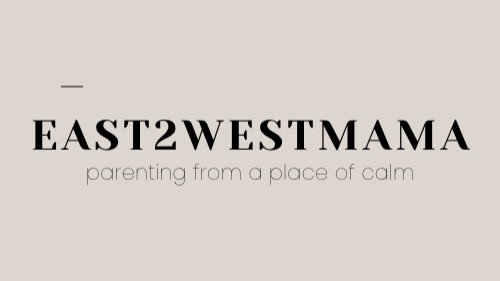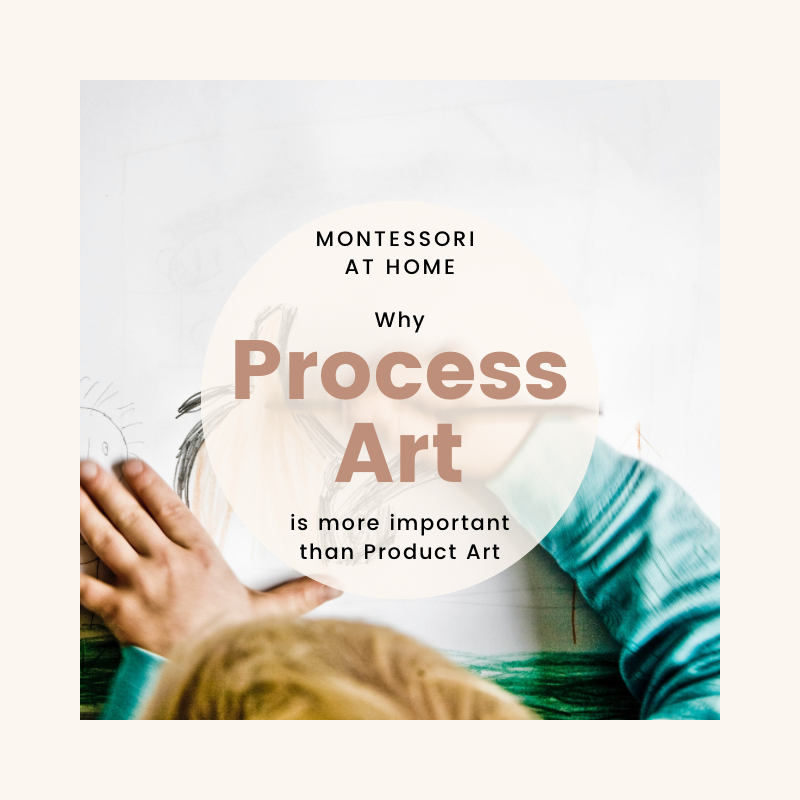Montessori at Home: Why Process Art is more Important than Product Art
This article may contain affiliate / compensated links. For full information, please see our disclaimer here.
Process art is more about the journey of exploring with the senses than about the outcome or product. This is the most appropriate form of introducing art in a Montessori environment. Read on to discover what process art entails and how you can do it with your young children at home.
What is Process Art?
Dr Maria Montessori believed that young children should be allowed to express themselves freely, and one of the best ways to do this is through art.
“Imagination does not become great until human beings, given the courage and the strength, use it to create.”
So often these days, we see images of picture-perfect art and crafts on Pinterest and Google (product art) and expect our children to be able to create the same masterpieces. When young children cannot recreate what is expected, they get frustrated and believe they are not artistic. Art is something that everyone can do, as long as we let go of the notion that we need to create something picture-perfect and instead just let ourselves play and get creative. This is the same thing we need to encourage in young children, which we can do through process art.
Process art is child-led, driven by choice and celebrates the creative process and experience of discovery. It always has unique outcomes with no two pieces looking alike. Process art is open-ended and encourages play and experimentation.
What is Product Art?
Product art is generally adult-driven, with specific steps or instructions to follow. The outcome looks similar no matter who does it. Product art focuses on making the final product look “right,” and a child is often considered unsuccessful if they do not do it exactly as it is meant to be done. The role of the adult in process art is to ensure that the child completes the final product “correctly”. Product art is often what we think of as craft projects.
Benefits of Process Art
Process art is the most developmentally-appropriate kind of art for toddlers, preschoolers, and young children. It meets them where they are as sensory explorers. Some benefits include:
Fosters creativity, independence and imagination
Teaches children to embrace “mistakes” as part of the exploration and creative process
Children discover the limits and possibilities of the materials they work with
Builds confidence in exploring and developing their ideas
Encourages the use of critical thinking skills and creativity
Offers the freedom to play without any pressure
In addition to all the benefits to children, adults often find it easier to facilitate process art. We do not need to hold all the answers or have all the material, we can experiment with children and find ways to work with what we already have. It takes the pressure off us as parents or caregivers to buy all these art supplies just to produce one small craft. There are often fewer tantrums involved; since there is no particular point to start or end at, children are free to experiment for as little or as long as they like.
Getting started with Process Art
If you have never tried process art with your children before, I highly encourage you to try it. Here are some tips to get you started:
Choose one or two art supplies at one time
Set the art supplies out and let children come and go as they please
(Don’t force them to engage if they don’t seem interested)Let the child follow his or her interests
Offer age-appropriate art supplies that the child can help himself to
Join in yourself and experiment with the materials: it’s often the best way to get children interested
(You might surprise yourself and enjoy it too!)Be playful and collaborative during the creative process
(Avoid directing or instructing the child)Do not expect perfection; look for the beauty in all creations
Our Favourite Art Supplies
Toddlers
Stickers
Stickers are the best, mess-free way to get children started with art. They are excellent for developing fine motor skills as children learn to peel stickers off the sheet and then position them on paper.
Dot stickers are my favourite supply to start out with for young children. There are no sharp edges that make it difficult to peel off, and these 20mm ones are a great size for tiny hands to handle.
Reuseable stickers are another great supply for toddlers since they tend to want to repeat an activity over and over. You might get through a pack of regular stickers pretty quickly and need to keep restocking them. I love the reuseable sticker books from Galt.
Water Painting
I first introduced water painting to my toddlers when I felt they were ready to start creating art. They are a great introduction to using and holding paintbrushes and are completely mess-free, which I love!
These Magic Water Colouring books are my favourite because of the beautiful pictures and how sturdy they are. My children have used their books at least a hundred times, but the pages have never ripped, and the spine has stayed intact despite many uses. I also like that it opens like a regular book (instead of flipping from the short edge on top) and lays completely flat. It also comes with a little holder for the paintbrush. It also comes with several different themes to suit your kids’ interests. The first one we owned was the Machines book and my son still loves it.
Crayons
Crayons are a great material to introduce as they are easier for little hands to hold than pencils. The Stockmar crayons are my favourite, as they have great pigment and lovely colours. A tip is to remove the wrapper from around the crayons so they can be used vertically or horizontally.
I recently bought Dayna a set of Crayola Twistables crayons and they have gotten some really good use. I take these with me when we travel because they don’t need sharpening and are pretty mess-free.
Dot Markers
Just before I was ready to introduce my kids to actual paints and paintbrushes, I let them use paint dot markers. They are essentially diluted washable paint in pen form. The thick cylinders make it easy for tiny hands to grasp, and they love the little dots made when stamped onto paper. It’s a low-mess way to introduce kids to painting.
Preschoolers
Watercolours
Watercolours are my absolute favourite art supply to use with preschoolers. The Stockmar watercolours are vibrant and concentrated, so they produce lovely colours when mixed together. These are concentrated colours, so I dilute them with a little water and put them in glass jars so the kids can paint directly with the colours instead of needing a separate tub of water. A tip is to have one paintbrush for each colour so that there is no need to wash the paintbrush in between colours.
THe Kuretake Gansai Tambi Japanese Watercolour Paints are another favourite, but works best once children are old enough to be able to wash their brush in between colours to keep the colours in the palette pure. It produces some really vibrant colours that blend well together.
We use these collapsing water cups for cleaning brushes in between colours. They fold down to one-third of their depth and stack nicely. I carry these with me if we are painting outdoors or when traveling.
When working with watercolours, it is usually best to use slightly thicker paper that can hold the water. Children tend to be heavy handed with paints, so regular paper could tear easily. I love these Faber Castell watercolour paper pads as they are thick enough for use with wet mediums and also fairly affordable.
Acrylic Paints
Another art supply I enjoy offering to the kids is acrylic paints. I bought this set from Amazon and it has lasted us a long time. It has all the basic primary colours, as well as black and white, which is everything you need to mix together many interesting colours. It’s a really good, affordable set that will last a long time.
These stainless steel paint palette trays are ideal for squeezing out small amounts of paint to use each time. They clean really easily, which is a huge advantage.
Colour Pencils
The Stabilo Woody 3-in-1 pencils are excellent for kids. They are so creamy and vibrant that they feel like paint in stick form. Another great feature is that they are water-soluble, which adds all the more variety to how they can be used. I would caution against letting young kids run wild with them because the colours rub off easily and could stain your furniture.
I could go on and on about art supplies for kids, but these are the top favourites in our home that get regular use. I hope that this is useful and encourages you to get messy and creative with your kids.



